Aguirre, the Wrath of God
9.2 /10 1 Votes
4/4 Roger Ebert Duration Country West Germany | 8/10 IMDb 98% Rotten Tomatoes Genre Adventure, Drama, History | |||||||||||||||||||||||||||||||||
 | ||||||||||||||||||||||||||||||||||
Release date 29 December 1972 (1972-12-29) Initial release December 29, 1972 (West Germany) Cast (Don Lope de Aguirre), (Inez de Atienza), (Gaspar de Carvajal), (Don Pedro de Ursúa), (Don Fernando de Guzman), Cecilia Rivera (Flores, Aguirre's daughter)Similar movies The Treasure of the Sierra Madre , The Man Who Would Be King , White Fang , Fitzcarraldo , The Far Country , North to Alaska Tagline A breathtaking journey into the heart of darkness. | ||||||||||||||||||||||||||||||||||
Don Lope de Aguirre (Klaus Kinski), a ruthless Spanish conquistador, vies for power while part of an expedition in Peru to find El Dorado, the mythical seven cities of gold. Accompanied by his daughter, Flores (Cecilia Rivera), Aguirre faces off against his superior, Don Pedro de Ursua (Ruy Guerra), and grows increasingly volatile after seizing control of the group. As Aguirre presses deeper into the Amazonian jungle, he descends further into madness.
Contents
- Plot
- Aguirre the wrath of god trailer
- Production
- Screenplay
- Herzog and Kinski
- Filming
- Music
- Critical response
- Legacy
- Influence
- Historical accuracy
- References

Aguirre, the Wrath of God (German: ), known in the UK as Aguirre, Wrath of God, is a 1972 West German epic film written and directed by Werner Herzog. Klaus Kinski stars in the title role. The soundtrack was composed and performed by German progressive/Krautrock band Popol Vuh. The story follows the travels of Spanish soldier Lope de Aguirre, who leads a group of conquistadores down the Orinoco and Amazon River in South America in search of the legendary city of gold, El Dorado. Using a minimalist story and dialogue, the film creates a vision of madness and folly, counterpointed by the lush but unforgiving Amazonian jungle. Although based loosely on what is known of the historical figure of Aguirre, the films storyline is, as Herzog acknowledged years after the films release, a work of imagination. Some of the people and situations may have been inspired by Gaspar de Carvajals account of an earlier Amazonian expedition, although Carvajal was not on the historical voyage represented in the film. Other accounts state that the expedition went into the jungles but never returned to civilization.
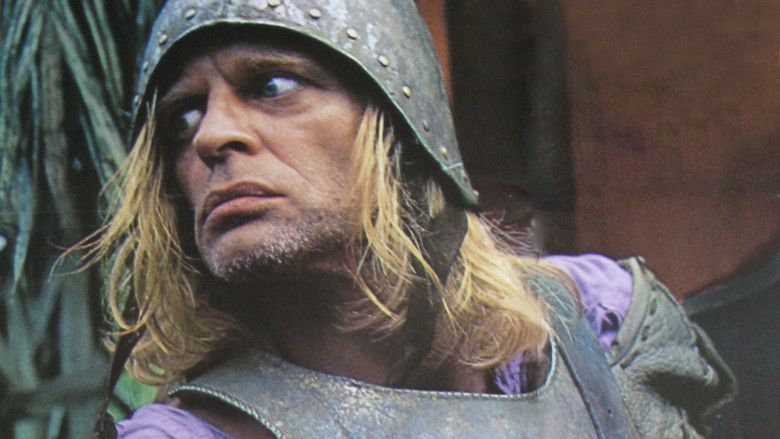
Aguirre was the first of five collaborations between Herzog and the volatile Kinski. The director and the actor had differing views as to how the role should be played, and they clashed throughout filming; Kinskis tantrums terrorized both the crew and the local natives who were assisting the production. Shooting was entirely on location, and was fraught with difficulties. Filming took place in the Peruvian rainforest on the Amazon River during an arduous five-week period, shooting on tributaries of the Ucayali region. The cast and crew climbed mountains, cut through heavy vines to open routes to the various jungle locations, and rode treacherous river rapids on rafts built by natives.
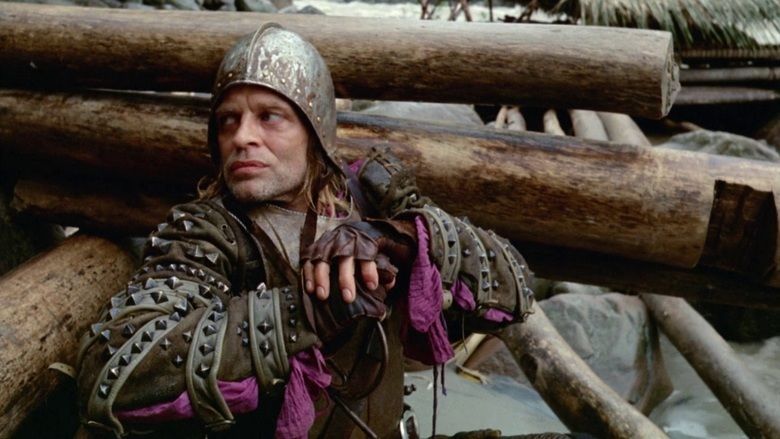
Aguirre opened to widespread critical acclaim, and quickly developed a large international cult film following. It was given an extensive arthouse theatrical release in the United States in 1977, and remains one of the directors best-known films. Several critics have declared the film a masterpiece, and it has appeared on Time magazines list of "All Time 100 Best Films". Aguirre’s visual style and narrative elements had a strong influence on Francis Ford Coppolas 1979 film Apocalypse Now.
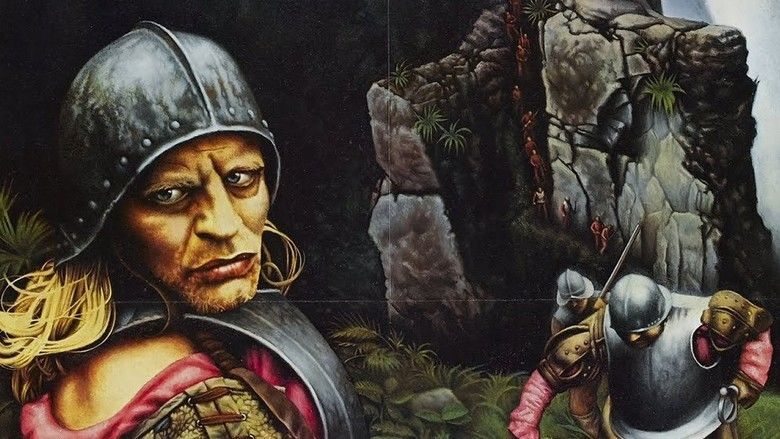
A few decades after the destruction of the Inca empire, a Spanish expedition leaves the mountains of Peru and goes down the Amazon river in search of gold and wealth. Soon, they come across great difficulties and Don Aguirres, a ruthless man who cares only about riches, becomes their leader. But will his quest lead them to "the golden city", or to certain destruction
Plot
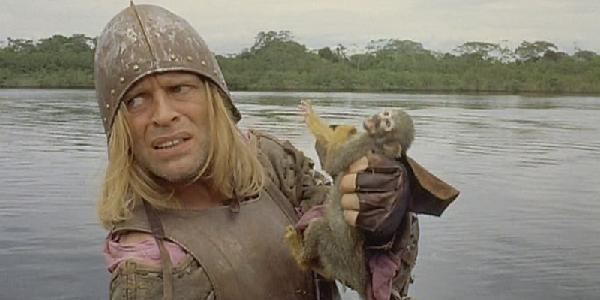
In 1560, several score of Spanish conquistadors, and a hundred Indian slaves, march down from the newly conquered Inca Empire in the Andes mountains into the jungles to the east, in search of the fabled country of El Dorado. Under the command of Gonzalo Pizarro (Alejandro Repulles), the men, clad in half armor, pull cannons down narrow mountainous paths and through dense, muddy jungle. On New Years Eve, reaching the end of his supplies and unable to go on without more information, Pizarro orders a group of forty men to scout ahead by raft down river. If they do not return to the main party within one week with news of what lies beyond, they will be considered lost. Pizarro chooses Don Pedro de Ursua (Ruy Guerra) as the commander of the expedition, Don Lope de Aguirre (Klaus Kinski) as his second-in-command, fat nobleman Don Fernando de Guzman (Peter Berling) representing The Royal House of Spain and Brother Gaspar de Carvajal (Del Negro) to bring the word of God. Also accompanying the expedition, against Pizarros better judgment, are Ursuas mistress, Dona Inez (Helena Rojo) and Aguirres teenage daughter, Flores (Cecilia Rivera, in her only film role).
Aguirre the wrath of god trailer
Traveling through rapids, one of the four rafts gets caught in an eddy, and the others are unable to help free it. That night, gunfire erupts on the trapped raft; in the morning the men on board are found dead, with two missing. Ursua wants the bodies to be brought back to camp for proper burial. Knowing this would slow down the expedition, Aguirre hints to Perucho (Daniel Ades) to "keep the rust off of the cannon". Perucho proceeds to fire the cannon at the raft, destroying it and throwing the bodies into the river.
During the night, the remaining rafts are swept away by the rising river. Time has run out for the scouting mission, and Ursua decides to return to Pizarros group. Aguirre leads a mutiny against Ursua, telling the men that untold riches await them ahead, and reminding them that Hernan Cortez won an empire in Mexico by disobeying orders. Ursua attempts to put Aguirre in chains, but he and a soldier loyal to him are shot. Inez cares for Ursua. Aguirre coerces the soldiers to elect the fat, lazy Don de Guzman as the new leader of the expedition. Aguirre proclaims de Guzman Emperor of the new country, and declares Philip II dethroned. A farcical trial of Ursua results in his being sentenced to death, but de Guzman surprises Aguirre by granting Ursua clemency.
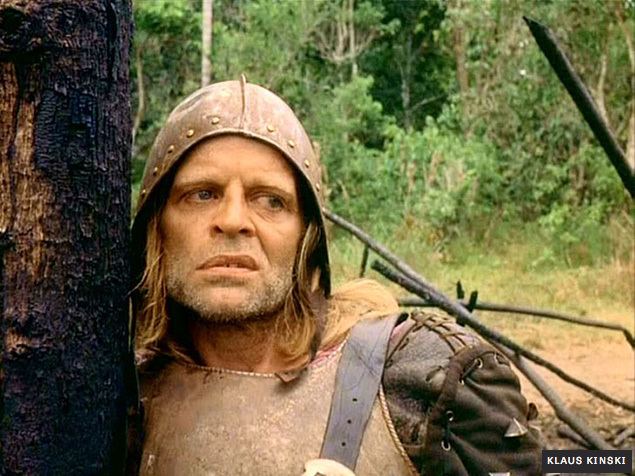
Aguirre proves to be an oppressive leader, so terrifying that few protest his leadership. Only Inez has the courage to speak out against him. Knowing that some of the soldiers are still loyal to Ursua, Aguirre simply ignores her.
The expedition continues on a single, newly built, large raft. An Indian couple approaching peacefully by canoe is captured by the explorers, and when the man expresses confusion when presented with a Bible, Brother Carvajal kills them for blasphemy. de Guzman dines on the low food supplies while the men starve, and has the expeditions only remaining horse pushed off the raft because it annoys him. Soon afterwards he is found strangled near the rafts outhouse. After de Guzman s death, Aguirre proclaims himself leader. Ursua is then taken ashore and hanged in the jungle. The group attacks an Indian village, where several soldiers are killed by spears and arrows. The distraught Inez walks into the jungle and disappears.
On the raft again, the group of slowly starving, feverish men begin disbelieving everything they see, even when shot with arrows. The group stares in disbelief at a wooden ship perched in the highest branches of a tall tree, which Aguirre orders be brought down and refurbished, but Brother Carvajal refuses. In a series of final attacks by unseen assailants, the remaining survivors including Aguirre’s daughter are killed by arrows. Aguirre alone remains alive on the slowly drifting raft. The raft becomes overrun by monkeys. The crazed Aguirre tells them: "I, the Wrath of God, will marry my own daughter and with her I will found the purest dynasty the world has ever seen. Together, we shall rule this entire continent. We shall endure. I am the Wrath of God! Who else is with me?"
Production
The idea for the film began when Herzog borrowed a book on historical adventurers from a friend. After reading a half-page devoted to Lope de Aguirre, the filmmaker became inspired and immediately devised the story. He fabricated most of the plot details and characters, although he did use some historical figures in purely fictitious ways.
Screenplay
Herzog wrote the screenplay "in a frenzy", and completed it in two-and-a-half days. Much of the script was written during a 200-mile (320 km) bus trip with Herzogs football team. His teammates got drunk after winning a game and one of them vomited on several pages of Herzogs manuscript, which he immediately tossed out of the window. Herzog claims he cant remember all of the things that he wrote on these pages.
The screenplay was shot as written, with some minor differences. In an early scene in which Pizarro instructs Ursua to lead the scouting team down the river, in the script Pizarro mentions that in the course of the expedition Ursua could possibly discover what happened to Francisco de Orellanas expedition, which had vanished without a trace years before (see "Historical Accuracy" section). Later in the screenplay, Aguirre and his men find a boat and the long-dead remains of Orellanas soldiers. Further down the river, they discover another ship lodged in some tree tops. In the screenplay, Aguirre and others explore the boat but find no sign of Orellana or his men. Herzog ultimately eliminated any such references to Orellanas expedition from the film. The sequence with the boat caught in the upper branches of a tree remains, but as filmed it seems to be simply a hallucinatory vision.
The finale is significantly different from Herzogs original script. The director recalled, "I only remember that the end of the film was totally different. The end was actually the raft going out into the open ocean and being swept back inland, because for many miles you have a counter-current, the Amazon actually goes backwards. And it was tossed to and fro. And a parrot would scream: "El Dorado, El Dorado"..."
Herzog and Kinski
Herzogs first choice for the role of Aguirre was actor Klaus Kinski. The two had met many years earlier when the then-struggling young actor rented a room in Herzog’s family apartment, and Kinski’s often terrifying and deranged antics during the three months he lived there left a lasting impression on the director. Years later, Herzog remembered the volatile actor and knew that he was the only possible man who could play the mad Aguirre, and he sent Kinski a copy of the screenplay. "Between three and four in the morning, the phone rang," Herzog recalled. "It took me at least a couple of minutes before I realized that it was Kinski who was the source of this inarticulate screaming. And after an hour of this, it dawned on me that he found it the most fascinating screenplay and wanted to be Aguirre."
From the beginning of the production, Herzog and Kinski argued about the proper manner to portray Aguirre. Kinski wanted to play a "wild, ranting madman", but Herzog wanted something "quieter, more menacing". In order to get the performance he desired, before each shot Herzog would deliberately infuriate Kinski. After waiting for the hot-tempered actors inevitable tantrum to "burn itself out", Herzog would then roll the camera.
On one occasion, irritated by the noise from a hut where cast and crew were playing cards, the explosive Kinski fired three gunshots at it, blowing the tip off one extras finger. Subsequently, Kinski started leaving the jungle location (over Herzogs refusal to fire a sound assistant), only changing his mind after Herzog threatened to shoot first Kinski and then himself. The latter incident has given rise to the legend that Herzog made Kinski act for him at gunpoint. However Herzog has repeatedly denied the claim during interviews, explaining he only verbally threatened Kinski in the heat of the moment, in a desperate attempt to keep him from leaving the set. The famous incident is parodied in Incident at Loch Ness, which Herzog co-wrote.
Filming
The film was made for US$370,000, with one-third of the budget paying for Kinskis salary. It was filmed on location in the Peruvian rainforest, Machu Picchu (the stone steps of Huayna Picchu), and on the Amazon River tributaries of the Ucayali region. Aguirre was shot in five weeks, following nine months worth of pre-production planning. The film was shot in chronological order, because Herzog believed the film crews progress on the river directly mirrored that of the explorers journey in the story. The director and his cast and crew floated in rafts down the Huallaga and Nanay rivers through the Urubamba Valley in Peru.
All of the actors spoke their dialogue in English. The members of the cast and crew came from sixteen different countries, and English was the only common language among them. In addition, Herzog felt that shooting Aguirre in English would improve the films chances for international distribution. However, the small amount of money that had been set aside for post-synchronization "left Peru with the man in charge of the process; both absconded en route." The English-language track was ultimately replaced by a higher-quality German language version, which was post-synched after production was completed. Herzog claims that Kinski requested too much money for the dubbing session, and so his lines were performed by another actor.
The low budget precluded the use of stunt men or elaborate special effects. The cast and crew climbed up mountains, hacked through thick jungle, and rode ferocious Amazonian river rapids on rafts built by natives. At one point, a storm caused a river to flood, covering the film sets in several feet of water and destroying all the rafts built for the film. This flooding was immediately incorporated into the story, as a sequence including a flood and subsequent rebuilding of rafts was shot.
The camera used to shoot the film was stolen by Herzog from the Munich Film School. Years later, Herzog recalled:
"It was a very simple 35mm camera, one I used on many other films, so I do not consider it a theft. For me, it was truly a necessity. I wanted to make films and needed a camera. I had some sort of natural right to this tool. If you need air to breathe, and you are locked in a room, you have to take a chisel and hammer and break down a wall. It is your absolute right."To obtain the monkeys used in the climactic sequence, Herzog paid several locals to trap 400 monkeys; he paid them half in advance and was to pay the other half upon receipt. The trappers sold the monkeys to someone in Los Angeles or Miami, and Herzog came to the airport just as the monkeys were being loaded to be shipped out of the country. He pretended to be a veterinarian and claimed that the monkeys needed vaccinations before leaving the country. Abashed, the handlers unloaded the monkeys, and Herzog loaded them into his jeep and drove away, used them in the shot they were required for, and released them afterwards into the jungle.
Music
Aguirres musical score was performed by Popol Vuh, a German progressive/Krautrock band. The band was formed in 1970 by keyboardist Florian Fricke, who had known Herzog for several years prior to the formation of the band. He had appeared as an actor in the director’s first full-length film, Signs of Life (1968), playing a pianist. Aguirre was only the first of many collaborations between the band and the director.
Popol Vuh’s “hypnotic music” for Aguirre met with considerable acclaim. Roger Ebert wrote, “The music sets the tone. It is haunting, ecclesiastical, human and yet something else... [T]he music is crucial to Aguirre, the Wrath of God..." AllMusic noted, “The films central motif blends pulsing Moog and spectral voices conjured from Florian Frickes Mellotron-related "choir organ" to achieve something sublime, in the truest sense of the word: its hard not to find the musics awe-inspiring, overwhelming beauty simultaneously unsettling. The power of the legendary opening sequence of Herzogs film...owes as much to Popol Vuhs music as it does to the directors mise-en-scene.”
Herzog explained how the choir-like sound was created, "We used a strange instrument, which we called a choir-organ. It has inside it three dozen different tapes running parallel to each other in loops. ... All these tapes are running at the same time, and there is a keyboard on which you can play them like an organ so that [it will] sound just like a human choir but yet, at the same time, very artificial and really quite eerie."
In 1975 Popol Vuh released an album entitled Aguirre. Although ostensibly a soundtrack album to Herzogs film, the six-track LP included only two songs ("Aguirre I (LAcrime Di Rei)" and "Aguirre II") taken from Aguirre, the Wrath of God. The four remaining tracks were derived from various recordings made by the group between about 1972 and 1974. At the time of Aguirre the band members were Fricke (piano, Mellotron), Fichelscher (electric guitar, acoustic guitar, drums), Djong Yun (vocals), and Robert Eliscu (oboe, pan pipe).
Critical response
The film was produced in part by German television station Hessischer Rundfunk, which televised the film on the same day it opened in German theatres. Herzog has blamed this for the relatively poor commercial reception of the film in Germany. However, outside Germany the film became an "enormous cult favorite" in "such places as Mexico, Venezuela, and Algiers." The film had a theatrical run of fifteen months in Paris. Aguirre received a theatrical release in the United States in 1977 by New Yorker Films. It immediately became a cult film, and New Yorker Films reported four years after its initial release that it was the only film in its catalog that never went out of circulation.
In Germany, the Suddeutsche Zeitung described the film as "a colour-drenched, violently physical moving painting". The Frankfurter Allgemeine Zeitung described Kinskis acting as "too theatrical" to embody Gods wrath.
In the US and the UK the film received mostly positive critical notices upon release. Vincent Canby, writing in The New York Times, called it "[A]bsolutely stunning ... Mr. Herzog views all the proceedings with fixed detachment. He remains cool. He takes no sides. He may even be slightly amused. Mainly he is a poet who constantly surprises us with unexpected juxtapositions ... This is a splendid and haunting work." In Time, Richard Schickel opined that "[Herzog] does the audience the honor of allowing it to discover the blindnesses and obsessions, the sober lunacies he quietly lays out on the screen. Well acted, most notably by Klaus Kinski in the title role, gloriously photographed by Thomas Mauch, Aguirre is, not to put too fine a point on it, a movie that makes a convincing claim to greatness." Time Outs Tony Rayns noted, "...each scene and each detail is honed down to its salient features. On this level, the film effectively pre-empts analysis by analysing itself as it proceeds, admitting no ambiguity. Yet at the same time, Herzogs flair for charged explosive imagery has never had freer rein, and the film is rich in oneiric moments."
Legacy
The films reputation through the years has continued to grow. J. Hoberman has written that Aguirre "is not just a great movie but an essential one ... Herzogs third feature ... is both a landmark film and a magnificent social metaphor." Danny Peary wrote, "To see Aguirre for the first time is to discover a genuine masterpiece. It is overwhelming, spellbinding; at first dreamlike, and then hallucinatory." Roger Ebert has added it to his list of The Great Movies, and in a 2002 Sight & Sound poll of critics and filmmakers on the best films ever made, Ebert listed it in his top ten. In the same poll, critic Nigel Andrews and director Santosh Sivan also placed it in their top ten list. In 1999, Rolling Stone included the film on the magazines "100 Maverick Movies of the Last 100 Years" list. Aguirre was included in Time Magazines "All Time 100 Best Films", compiled by Richard Schickel and Richard Corliss. Entertainment Weekly named it the 46th greatest cult film ever made. The film was ranked #19 in Empire magazines "The 100 Best Films Of World Cinema" in 2010.
Aguirre has won several prestigious film awards. In 1973 it won the Deutscher Filmpreis (German Film Award) for "Outstanding Individual Achievement: Cinematography". In 1976 it was voted the "Best Foreign Film" by the French Syndicate of Film Critics. In 1977 the National Society of Film Critics US gave it their "Best Cinematography" Award. It won the prestigious Grand Prix of the Belgian Film Critics Association in 1976 and was nominated for a "Best Film" Cesar Award.
Influence
Francis Ford Coppolas 1979 film Apocalypse Now, a film based on Joseph Conrads 1902 novella Heart of Darkness, was influenced also by Aguirre, as it contains seemingly deliberate visual "quotations" of Herzogs film. Coppola himself has noted, "Aguirre, with its incredible imagery, was a very strong influence. Id be remiss if I didnt mention it."
Several critics have noted that Aguirre appears to have had a direct influence on several other films. Martin Rubin has written that "[a]mong the films strongly influenced by Aguirre are Coppola’s Apocalypse Now and Terrence Malicks The New World (2005)". J. Hoberman agreed, noting that Herzog’s "sui generis Amazon fever dream” was “the influence Malicks over-inflated New World cant shake." Channel 4 opined "This is an astonishing, deceptively simple, pocket-sized epic whose influence, in terms of both style and narrative, is seen in films as diverse as Apocalypse Now, The Mission, Predator, and The Blair Witch Project (1999)." In addition, Nicolas Winding Refns 2008 film Valhalla Rising is an homage to Aguirre.
Historical accuracy
Although plot details and many of the characters in Aguirre come directly from Herzog’s own imagination, historians have pointed out that the film fairly accurately incorporates some 16th-century events and historical personages into a fictional narrative. The film’s major characters, Aguirre, Ursua, Don Fernando, Inez and Flores, were indeed involved in a 1560 expedition that left Peru to find the city of El Dorado. Commissioned by Peru’s governor, Ursua organized an expeditionary group of 300 men to travel by way of the Amazon River. He was accompanied by his mixed-race mistress, Dona Inez. At one point during the journey, Aguirre, a professional soldier, decided that he could use the 300 men to overthrow the Spanish rule of Peru. Aguirre had Ursua murdered and proclaimed Fernando as “The Prince of Peru”. Fernando himself was eventually murdered when he questioned Aguirre’s scheme of sailing to the Atlantic, conquering Panama, crossing the isthmus and invading Peru. Many others who attempted to rebel against Aguirre were also killed. The surviving soldiers conquered Isla Margarita off the coast of Venezuela and made preparations to attack the mainland. However, by that time Spanish authorities had learned of Aguirre’s plans, and when the rebels arrived in Venezuela, government agents offered full pardons to Aguirre’s men. All of them accepted the deal. Immediately prior to his arrest, Aguirre murdered his daughter Flores, who had remained by his side during the entire journey. He was then captured and dismembered.
Herzog’s screenplay merged the 1560 expedition with the events of an earlier Amazonian journey in 1541 and 1542. Like Ursua, Gonzalo Pizarro and his men entered the Amazon basin in search of El Dorado. Various troubles afflicted the expedition and, sure that El Dorado was very close, Pizarro set up a smaller group led by Francisco de Orellana to break off from the main force and forge ahead, then return with news of what they had found. This group utilized a brigantine to journey down the river. Accompanying Orellana was Gaspar de Carvajal, who kept a journal of the group’s experiences. The historic Gaspar de Carvajal (1500–1584) was a Spanish Dominican friar who had settled in Peru and dedicated himself to the conversion of the Indians. His general attitude towards the Indians was consistent with the benevolence of his better-known brother Dominican friar, Bartolome de las Casas. This personality is at odds with the description in the film where Carvajal is portrayed as a cowardly priest who claimed that "the church was always on the side of the strong." After failing to find the legendary city, Orellana was unable to return because of the current, and he and his men continued to follow the river until he reached the estuary of the Amazon in 1542. Other Spanish expeditions outside the Amazon influenced the story; the conversation in which the Indians refuse a Bible comes from events before the Battle of Cajamarca, in which Inca emperor Atahualpa allegedly rejected the Requerimiento. The chronicle of Alvar Nunez Cabeza de Vaca, La Relacion ("The Account"), mentions the appearance of a boat in a treetop after a fierce tropical storm in Hispaniola:
Monday morning we went down to the port and did not find the ships. We saw their buoys in the water, from which we realized that they had been lost, and we went along the coast to see if we could find signs of them. Since we found nothing, we went into the woods, and a quarter of a league into them we found one of the ships boats in some trees.
Kinski’s crazed performance bore similarities to the real Aguirre, a “true homicidal megalomaniac”. Many of his fellow soldiers considered his actions to be that of a madman. Kinski’s use of a limp reflected one that Aguirre actually had, the result of a battle injury. Aguirre’s frequent short but impassioned speeches to his men in the film were accurately based on the man’s noted “simple but effective rhetorical ability.”
References
Aguirre, the Wrath of God WikipediaAguirre, the Wrath of God IMDbAguirre, the Wrath of God Roger EbertAguirre, the Wrath of God Rotten TomatoesAguirre, the Wrath of God themoviedb.org
